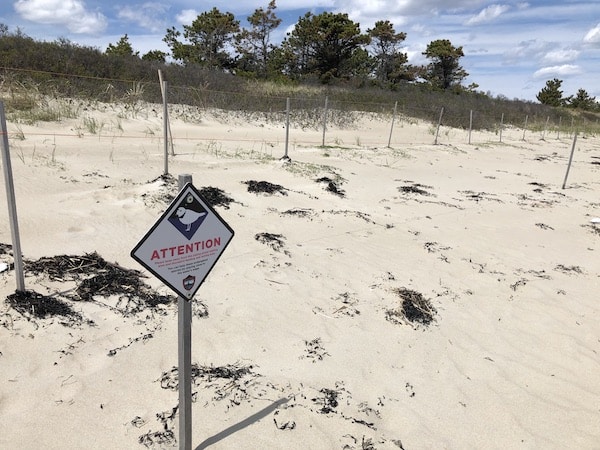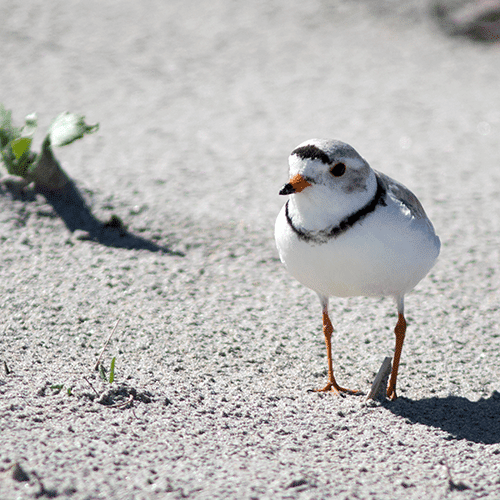
A question we have been getting a lot with the heavy storms pummeling Maine’s coastlines this winter: How will the Piping Plovers manage the upcoming nesting season with the beaches so damaged?
What a great question! Finally, fellow plover biologist Laura Williams and I were able to get away from our desks March 12 and to check out some of our plover beaches to assess changes and think about upcoming nesting seasons.
My first reaction to being on the beach was being overwhelmed; it is quite a shock to see some beaches that we are deeply familiar with look so different. I’m sure many regular beach goers feel the same! It’s eerie seeing chunks of seawalls that we didn’t know existed under the dunes or patches of bare sand where we once had a large dune. It’s hard to imagine how plovers might find a place to nest that will remain above water line during storm tides in some areas, where beaches lost tremendous amounts of sand and elevation is far below where it was in years past. On the flip side of the coin, some washed over dunes have created open sand areas that look like ideal nesting spots and are sure to attract many nesting plovers.

An important note: our beaches always lose sand in winter. It’s part of the natural cycle of sand movement with sand shifting offshore in winter and coming back in milder months. Beaches are incredibly dynamic systems and can change dramatically even on a daily basis. When I first started working with Maine’s plovers 15 years ago, many beaches looked very different than they did in 2023. The seawalls that were recently exposed have been there for decades—a remnant of old school ‘beach management‘ that we know now is harmful. Those seawalls reflect the past position of our beaches and show how much things have changed over the years.
In previous summers, the plover crew has had signs and equipment get buried by sand deposits. It’s possible some beaches will build up in the coming months. Doing simple things—like leaving wrack on the beach to collect blowing sand and deposit moisture and nutrients back to the beach—can help our beaches build back from the storms. Walking along our more developed beaches, it is striking to see how beach management by individuals is strongly correlated with how well buildings fared on the beach. Landowners that let vegetation grow and build dunes had conspicuously less damage to their homes and property than those that strive for a smooth sand beachfront. Our strong Coastal Sand Dune Rules exist to protect dunes and help them build up, which in turn protects our beaches and beach-front infrastructure.
Still, good stewardship might not be a match for rising tides and increasing storms. Beaches are dynamic systems that are built to move, and plovers—as vulnerable as they are to many threats—have evolved to move with the sand. In nature’s ideal world, beaches would be able to do what they always do: move with the changing seas. It’s our human-built seawalls, buildings, and roads that alter beach dynamics and bring uncertainty about the future of beach ecosystems.
At the end of the day, Piping Plovers are surprisingly resilient when it comes to the challenges Mother Nature throws them on the beaches, as they have evolved to master a changeable and challenging place. This is sure to be an interesting nesting season. I’m pretty sure that as long as we give them space, plovers will find ways to make things work.The thing I do know for certain: we will need to adapt to our changing world, and it’s our responsibility to make room for wildlife.
